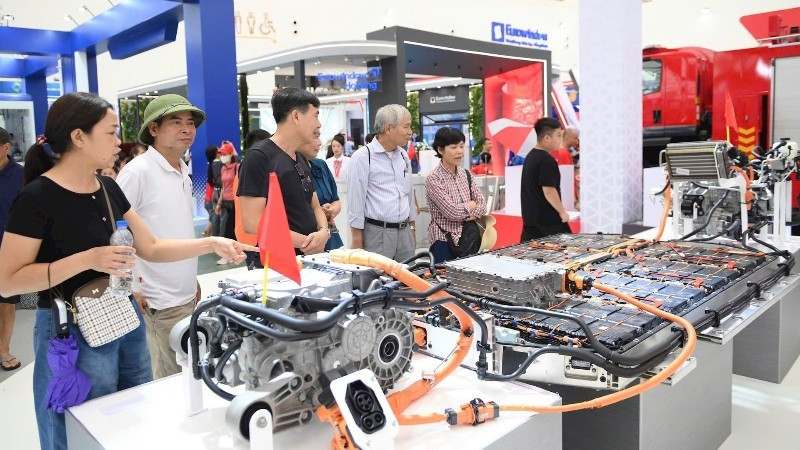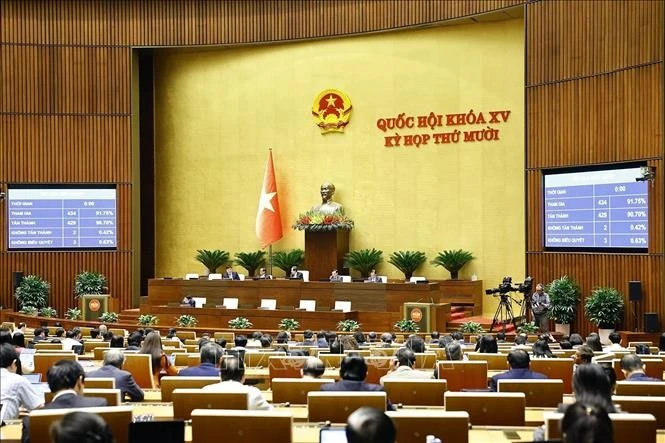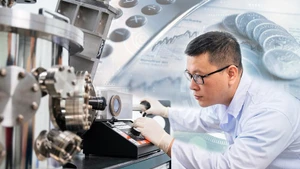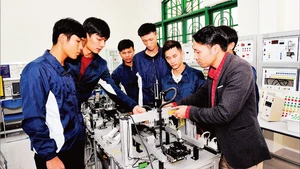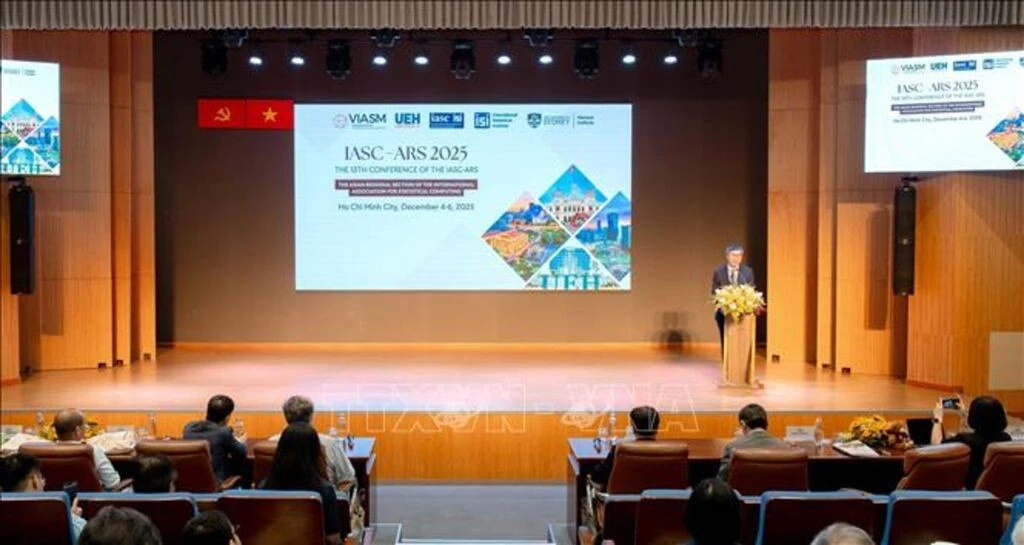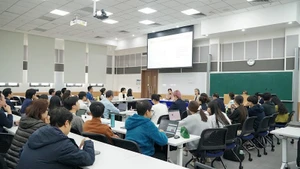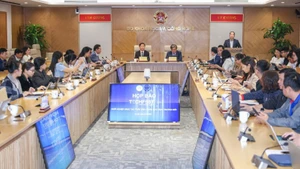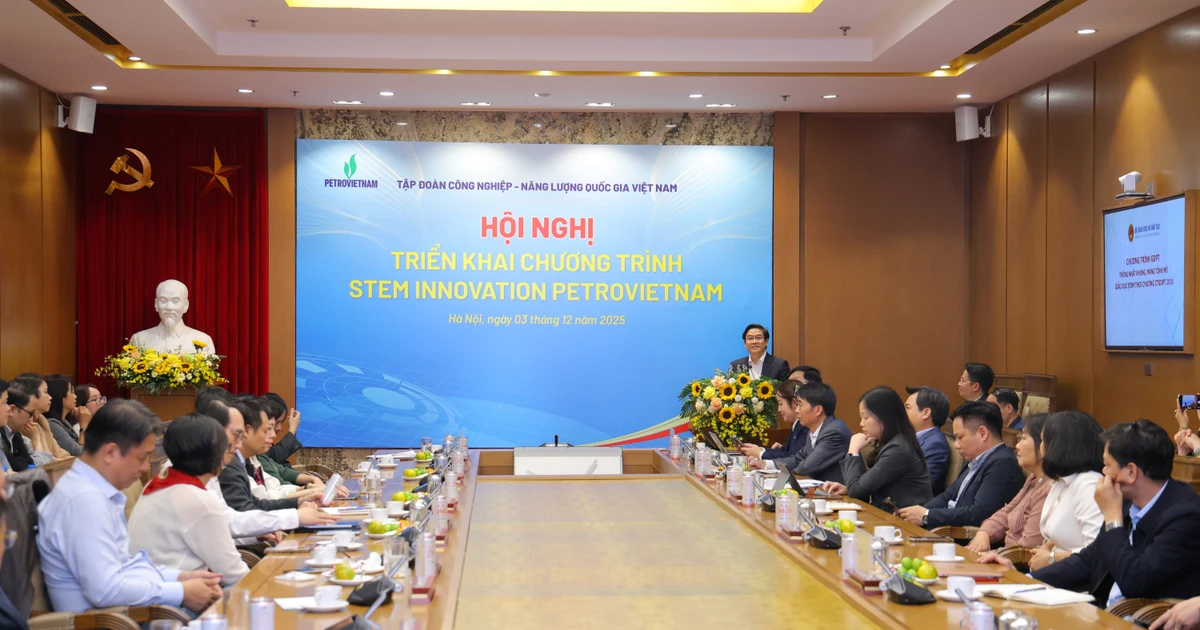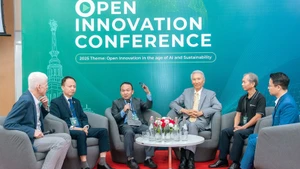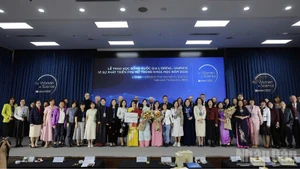Establishing a new growth model
In the guiding viewpoints for national development in the new period, the draft Political Report of the 13th Party Central Committee for the 14th National Congress reflects a balance between growth and sustainability, between internal and external strengths, and between short-term goals and long-term interests. It calls for close linkage between strategic tasks: socio-economic development and environmental protection as the centre; Party building as the key; cultural and human development as the foundation; and national defence, security, and foreign affairs as the core and constant priorities.
Alongside these traditional pillars, a new one needs to be added to complete the comprehensive development framework — treating science, technology, innovation, and digital transformation as central breakthroughs for national progress.
Viet Nam is now required to shift towards a new growth model based on knowledge, technology, and innovation. The draft Political Report states: “To establish a new growth model aimed at enhancing productivity, quality, efficiency, added value, and competitiveness of the economy; making science, technology, innovation, and digital transformation the principal driving forces; and generating new, high-quality productive capacity and production methods.”
Developing based on science, technology, innovation, and digital transformation means that these factors must account for the majority of growth. If Viet Nam’s GDP increases by 10%, contributions from science, technology, innovation, and digital transformation should exceed 5%. In this regard, the leading and supportive role of the State is crucial. When the State spends 3% of its budget on science, technology, innovation, and digital transformation, society as a whole will contribute an equivalent of 2.5–3% of GDP.
The State should move from “small and scattered” spending on science, technology, innovation, and digital transformation to greater investment; from controlling research costs to providing funding; from reclaiming research outcomes for the State to allowing research institutions to commercialise them; and from paying researchers only wages to enabling them to share in the commercial value of their outcomes — allowing them to prosper legitimately from their work.
In defining the new growth model, the draft Political Report prioritises developing and mastering technologies in key foundational industries such as energy, mechanical engineering, metallurgy, new materials, digital technology, and biotechnology. At the same time, it emphasises developing emerging industries capable of creating breakthroughs, including the semiconductor industry, robotics and automation, artificial intelligence, advanced materials, environmental industries, renewable and new energy, aerospace, and quantum technology.
These sectors are not only strategic economic industries but also tools enabling Viet Nam to integrate more deeply into global value chains and enhance its international standing. Furthermore, the draft should stress developing dual-use defence industries — serving both civilian and national defence-security purposes.
Global experience shows that many of the most advanced technologies, such as new materials, aerospace, artificial intelligence, and biotechnology, originate from research and application in the defence sector before spreading into socio-economic life. Embedding defence industries within the innovation ecosystem, supported by appropriate investment mechanisms and policies, will create valuable dual-use products and technologies, enhance national production capacity, promote civilian economic growth, and strengthen national defence and security. This is a strategic approach ensuring the linkage between national development and protection in the new era. The State should allocate 70% of resources to strategic technologies to ensure that Viet Nam’s strategic technological capabilities reach the level of developed countries by 2030–2035.
Another key element is the development of education and training for high-quality human resources. The draft Political Report should highlight the central role of national and regional universities and major higher education institutions as national centres for science, technology, and innovation. When higher education closely connects with scientific research and innovation, it will produce the highly qualified workforce necessary for development in the new era.
At the same time, the draft should clearly state the policy of shifting basic research to universities, viewing them as centres of knowledge creation, while research institutes and enterprises focus on applied research, technology development, and product commercialisation. This division of labour will optimise resources and create a balanced ecosystem of science and technology, tightly linking research, education, and production.
Outstanding and breakthrough mechanisms and policies needed
The draft Political Report for the 14th National Congress should emphasise the need for bold reform of management, investment, and autonomy mechanisms for scientific and technological institutions; complete mechanisms for performance-based resource allocation; and targeting total spending on science, technology, innovation, and digital transformation to reach 3% of GDP, with 3–5% of the annual state budget earmarked for this field, and social capital playing the main role. This represents a strategic, long-term investment that lays the foundation for national development.
In parallel, it is necessary to build and implement legal frameworks, mechanisms, and pilot policies for science, technology, and innovation; develop national scientific and technological infrastructure — especially world-class national key laboratories in strategic technologies; establish international-standard systems of standards and regulations; and develop the science and technology market to accelerate the application of research results in practice, linked with the protection and efficient exploitation of intellectual property and digital resources. Policies must strongly encourage enterprises to invest in science, technology, and innovation, positioning them as the central actors of the national innovation ecosystem.
Another key requirement is to reform the mechanisms for evaluating scientific outcomes and valuing technologies. Activities in science, technology, innovation, and digital transformation must be measured and assessed based on their specific contributions to economic growth, productivity improvement, and competitiveness enhancement. This is an objective measure that both motivates progress and ensures transparency and efficiency in investment.
In the new context, digital transformation must be promoted comprehensively. It is not merely a management tool but the foundation for developing a modern, efficient, and enabling national governance model. Digital government, digital administration, digital economy, and digital society must be implemented synchronously to create a transparent, efficient, citizen-centred environment, while unlocking resources and enhancing national competitiveness.
In the new context, digital transformation must be promoted comprehensively. It is not merely a management tool but the foundation for developing a modern, efficient, and enabling national governance model. Digital government, digital administration, digital economy, and digital society must be implemented synchronously to create a transparent, efficient, citizen-centred environment, while unlocking resources and enhancing national competitiveness.
In terms of national governance, the draft Political Report should add the solution “comprehensive digital transformation to perfect the national governance model” to Section XIII. In the digital era, a socialist rule-of-law State must not only rely on a comprehensive legal system but also on a modern governance apparatus based on data, transparency, efficiency, and developmental orientation. Digital transformation within the Party should also be promoted strongly to renew leadership methods and improve the effectiveness and efficiency of Party leadership at all levels.
In the new phase, as science, technology, innovation, and digital transformation are identified as the main breakthroughs, it is necessary to ensure an appropriate proportion of scientifically and technically qualified officials within Party committees at all levels, as stipulated in Resolution No. 57-NQ/TW, under Section XIV of the draft Political Report. This is an important condition to ensure that Party committees possess both political vision and the ability to grasp and direct the implementation of key areas of national development. The presence of scientifically knowledgeable cadres in leadership structures will help bridge the gap between policy and action, generating the synergy needed to translate strategic decisions into effective reality.
